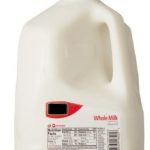fasdf@sadf.tu
Walmart will demand that its suppliers of leafy greens use its Blockchain by September 2019
Walmart and Sam’s Club sent a letter to their suppliers of fresh leafy greens requiring that they trace their products all the way to the farm, utilizing Walmart-IBM Food Trust network, using blockchain technology software by September of 2019. This decision to require the use of blockchain was triggered by the recent romaine lettuce outbreak linked to E. coli O157:H7. The outbreak resulted in 210 confirmed cases, caused 96 hospitalizations, and tragically 5 deaths. While the FDA and the health authorities were able to quickly determine that the romaine lettuce came from Yuma AZ, the exact affected lots could not be identified until...
fasdf@sadf.tu
Fluid Milk Spoilage by Psychrotolerant Spores and Shelf-Life Improvement
Cornell University researchers created a new predictive model that examines spore-forming bacteria and their impact on pasteurized milk shelf life, published in the August issue of the Journal of Dairy Science entitled “Psychrotolerant spore-former growth characterization for the development of a dairy spoilage predictive model”. The goal of the research was to create a mathematical model to increase the product shelf life and have a more meaningful and accurate way to estimate the shelf life. This can reduce food waste and reduce food spoilage, by a better understanding of the parameters driving spoilage. The researchers characterized the ability to germinate and grow...
fasdf@sadf.tu
Tracking and tracing foods- the role of blockchain
Part 2- Blockchain as a solution to traceability Why Blockchain? In our previous blog we defined blockchain as a decentralized, distributed ledger technology, among many thousands of computers that can record transactions between parties in a secure and permanent way. It is often associated with cryptocurrency. The blockchain is an emerging technology that offers a way for companies to perform transactions with each other securely as they move products around the world. What makes blockchain unique is that it is a shared, permanent ledger that records all the transactions in a chronological order that cannot be altered or deleted. The food supply...
fasdf@sadf.tu
Whey contaminated with Salmonella causes a ripple effect
The Ripple Effect The ripple effect is a chain reaction of recalls. Typically an ingredient manufacturer produces a product that may contain a pathogen. The contaminated product is distributed to many other manufacturers that incorporate the ingredient into their products. As a result of the initial recall, all the users of the ingredient are required to recall their products. In some cases a tertiary recall happens, when secondary recalled products are manufactured in line adjoined to the lines where the secondary products are produced. We are currently starting to see the chain reaction as a result of a whey powder...




